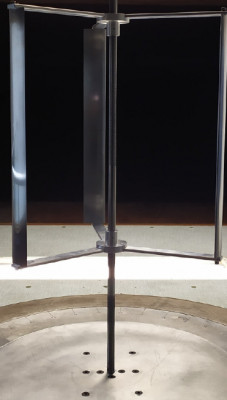News
SEMS Researchers Collaborate with top South African University on Wind Turbine Aerodynamics
10 March 2025

On 10th March 2025, Queen Mary University of London signed an agreement with the University of the Witwatersrand in Johannesburg, South Africa, to collaborate on the research project “Small-scale vertical-axis wind turbines for backup domestic electricity generation in rural South African communities”. Kshitij Sabnis (QMUL) and Michael Atkins (University of the Witwatersrand) have received an International Collaboration Award worth £225k from the Royal Society under the International Science Partnerships Fund (ISPF). Through supporting collaboration, funding high-quality original research and nurturing talent, the award aims to enable outstanding emerging research leaders in the UK and South Africa to jointly develop research collaborations that address development challenges faced by developing countries.
The project will tackle the unreliable generation and distribution of electricity in South Africa, which causes frequent power outages. These power outages disproportionately affect economically-deprived, rural communities, which tend not to have the infrastructure or purchasing power to adopt off-grid approaches reliant on solar power. Wind power acts as a promising alternative resource to act as a back-up emergency energy source in domestic settings, with vertical-axis wind turbines generally considered to be the cheapest and most efficient devices per footprint area.
Vertical-axis wind turbines currently are only available in configurations which would be too large to fit in most domestic settings, are beyond the purchasing power of many households and provide a power which would be surplus to the requirements of an emergency resource. To address these shortcomings, the research project will develop a vertical-axis turbine which is much smaller in scale and thus cheaper, but still provides sufficient power output. However, the aerodynamic and mechanical properties of such small-scale turbines are largely unknown, with the latter aspect particularly important to ensure blades do not break and get projected from the device in close proximity to people in domestic settings.
In order to address these research gaps, the QMUL team (Kshitij Sabnis, Neil Cagney, Hulya Biler, Anushka Goyal) will conduct a series of wind tunnel experiments in the Whitehead Aeronautical Laboratory to optimise key design parameters of the wind turbine, with a focus on obtaining physical insight into self-starting characteristics, flow ingestion and the interference between blades. The measurements will also establish the structural loading on the blades throughout their motion cycle.
The team at the University of the Witwatersrand (Michael Atkins, Sjouke Schekman) will use the QMUL research findings to build a representative wind turbine model. Wind tunnels tests will be conducted to evaluate the turbine’s performance and to quantify the structural forces and fatigue life of the turbine blades. The team will then undertake field testing of a prototype, small-scale wind turbine in representative real-life settings in rural South Africa to characterize and optimise its aerodynamic and mechanical performance.
| Contact: | Kshitij Sabnis |
| Email: | k.sabnis@qmul.ac.uk |
| People: | Kshitij SABNIS Neil CAGNEY Hulya BILER Anushka GOYAL |
| Research Centre: | Intelligent Transport |




